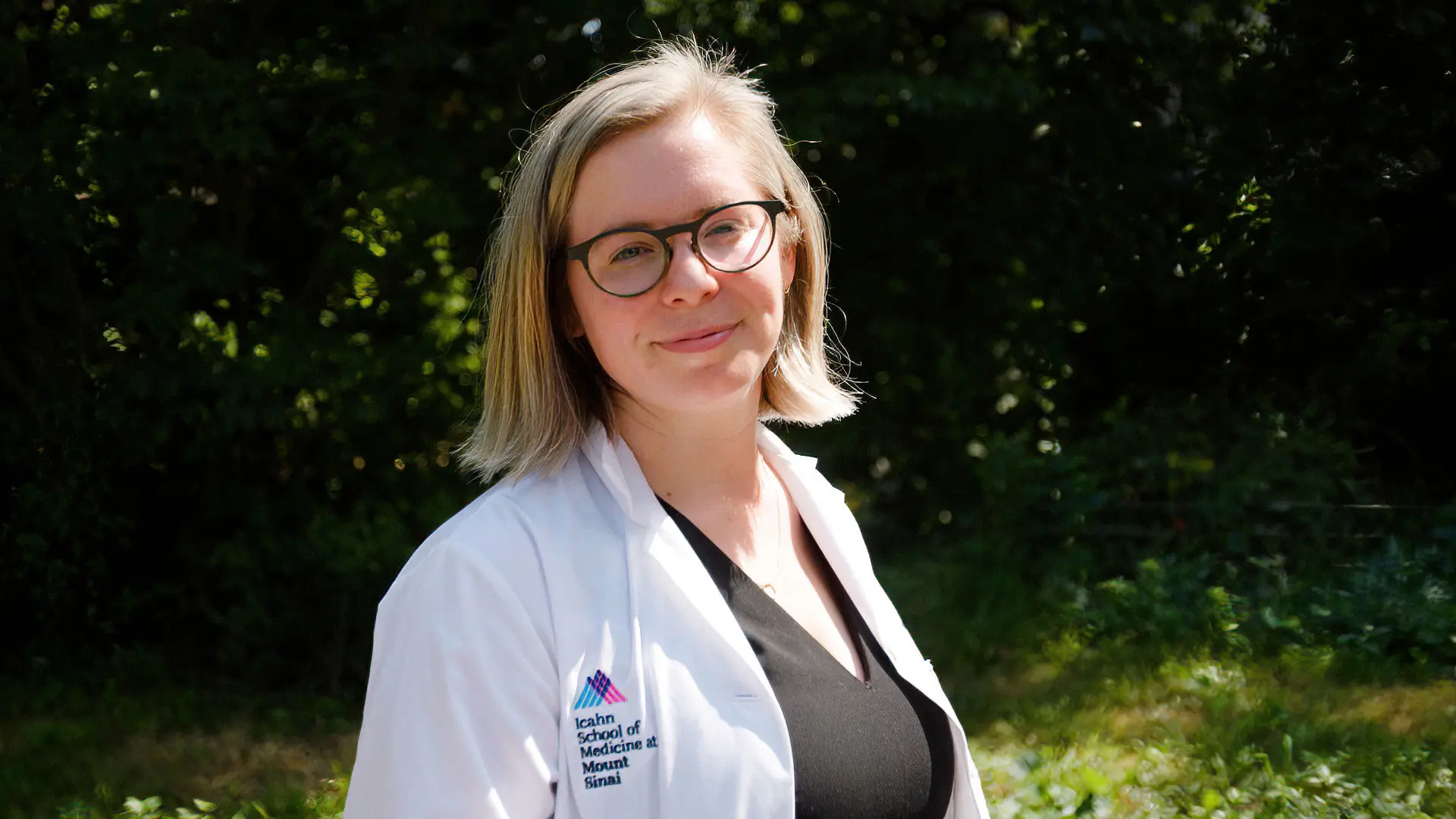The Brookdale Department of Geriatrics and Palliative Medicine at Mount Sinai has long been at the forefront of improving care for older adults and seriously ill patients, with programs that have strengthened the science of all issues related to aging.
Recently, the Brookdale Department’s research has expanded to include a specific focus on changes in Medicare, especially with the rise of Medicare Advantage plans. These plans are offered by private companies that contract with Medicare to provide services typically covered by Medicare Parts A, B, and D to their enrollees. They have been widely promoted through television advertising, and they now cover more than 50 percent of Medicare beneficiaries.
One of the specific concerns is how these Medicare Advantage plans are changing the market and the health care environment for older patients and those with serious illness.
Three of the Brookdale Department’s experts recently provided their insights on the issues: Claire Ankuda, MD, MPH, Associate Professor; Melissa Aldridge, PhD, MBA, MPH, Professor and Vice Chair of Research; and Diane Meier, MD, Professor, and Founder, Director Emerita, and Strategic Medical Advisor of Mount Sinai’s Center to Advance Palliative Care.

Claire Ankuda, MD, MPH, Associate Professor
How are the ways that Medicare Advantage plans influence the care of people with serious illness different from traditional Medicare?
Dr. Ankuda: The most obvious way that Medicare Advantage plans are influencing their health care is by having very different benefit packages that vary plan to plan. This is evident in the television commercials aired frequently during open enrollment. Plans have vastly different costs and in terms of the cost that you pay to see different physicians or different hospitals. One gap in our understanding is how those cost structures—including which providers and hospitals are in network or that people pay lower costs to use—influence care.
Medicare Advantage plans also have the ability to offer benefits that are not traditionally covered by Medicare. This is important because, oftentimes, that care matters most to older adults with serious illness. Examples of this include daily transportation to radiation therapy, meal delivery, or assistance in the home. Medicare Advantage plans have the ability to provide these services, but we don't know which older adults are receiving which benefits and which plans.
Medicare Advantage affects care in other ways, too. Prior authorizations and denials for treatments, for example, are important considerations. Now, some of that might be because a treatment is inappropriate and a Medicare Advantage plan is flagging that. Or someone's physician is prescribing a certain medication when another evidence-based or less costly option is available. However, these events involve a lot of burden and paperwork for patients and clinicians. And sometimes those denials and prior authorizations are not backed by research and would be covered under traditional Medicare. In fact, there was a major investigation by the Office of Inspector General into denials of care in Medicare Advantage that highlighted the fact that these plans are using denials, sometimes inappropriately, to refuse to pay for care that patients should be getting.
What do we need to do or need to know to ensure that people with serious illness receive the highest quality of care with Medicare Advantage?
Dr. Ankuda: Yet another way that Medicare Advantage plans are influencing care is through the use of care management providers – for example, nurses who support patients, coordinate care, and provide a variety of different functions. We don't know the quality or standards of these providers and how this differs across the Medicare Advantage programs. It could be very beneficial for patients in terms of helping them close the gaps in their health care use. It could be something that doesn't really matter to patients. Or it could be something where nurses are involved in the care, and we don't know the quality of that involvement. That's an important area of research into what exactly is happening with care management.
One thing that is striking is our lack of data about Medicare Advantage plans. We need to have better data on the kinds of services and benefits that are delivered by Medicare Advantage plans to older adults with serious illness. Some of that is finely grained data based on individual plans and some of that is better information about overall quality standards. For example, the Centers for Medicare & Medicaid Services (CMS) employs a survey called CAHPS that is collected of enrollees and Medicare Advantage plans and assigns quality star ratings. However, the survey isn't equally completed by all patients. Some of the lowest rates of completion of the survey are among people with dementia, an important population with serious illness. Therefore, we know the survey is systematically excluding a lot of people with serious illness due to certain parameters and requirements. We also know that when this survey data is collected, and the same is true for other quality data, it's collected at the level of the contract. Contracts are conglomerations of lots of Medicare Advantage plans that may cross dozens of states and may comprise very different benefit packages, very different networks of hospitals and physicians. So if the quality data is aggregated at that level, it doesn't help us understand what is the quality of care delivered to a specific patient under a specific plan. We need to move toward more local data when it comes to understanding quality of care and Medicare Advantage.
How can the data collection and patient experience be improved?
Dr. Ankuda: Defining quality of care for people with serious illness is very much based on what's most important to that patient. It is highly personal and highly individual. The best way to measure quality is to go directly to the source, to ask patients themselves or, if they've died, their remaining family. How were they treated? Were they respected? Were they listened to? Were their goals met? Was communication high-quality?
When a person dies in hospice, for example, their family and caregivers are approached for a post-death survey, and that is how their experience is documented. I would argue that we need a similar approach for everyone in Medicare Advantage programs. The only way we can appropriately measure quality is to capture their voice. By implementing such a survey, we would also capture the voices of our highest-need population.
Medicare Advantage programs should also be encouraging greater use of palliative care and, when appropriate, hospice. We know that palliative care and hospice improve quality of life. At present, only 50 percent of Medicare beneficiaries are enrolled in hospice programs. The other 50 percent likely includes many seriously ill individuals who will have had a very different experience in health care. Hospice-eligible patients should receive high-quality, comprehensive care.

Melissa Aldridge, PhD, MBA, MPH, Professor and Vice Chair of Research
How has hospice ownership changed over the last 20 years?
Dr. Aldridge: There have been decades of steady growth of for-profit ownership of hospice agencies, from about 15 percent in the early 1990s, to almost one-third of hospice agencies in early 2000s to an estimated 70 percent in 2020.
A new trend is private equity ownership of health care providers, which has emerged as a rapidly increasing, yet poorly understood phenomenon. Recent reports detail an increase in private equity ownership across the health care delivery system including hospitals, nursing homes, physician practices, dermatology practices, and oncology clinics with mixed-to-harmful impacts on quality of care. Our preliminary work, using a real-time economic dataset tracking mergers and acquisitions within the health care sector linked to Medicare administrative data, identified 124 acquisitions of U.S. hospices by 47 private equity firms from 2015 to 2022. Some deals represented a private equity firm’s first hospice acquisition while others indicated significant and growing market share.
How does the change in ownership influence patient care and hospice?
Dr. Aldridge: It is difficult to identify a health care sector more susceptible to the mismatch between profit maximization incentives and quality of care than hospice. Whereas some have argued that tax status (i.e., whether a hospice is for-profit or nonprofit) is unrelated to hospice quality, an increasing body of evidence suggests otherwise. The requirement for for-profit organizations to distribute net income to shareholders provides strong incentives to generate consistent profits over short time windows. These pressures are further magnified when the owners are private equity firms that seek to sell acquisitions for considerably more than they paid for relatively short periods (three to five years) rather than regard them as long-term investments.
Why is profit maximization theoretically problematic for hospice care? Hospice is inherently a service that is difficult for patients and families to evaluate. They often don’t know what hospice is until the admission interview, at which point they are immersed in the challenges of the end-of-life experience. Even if patients or their families experience poor quality care and wish to change hospice agencies (as one could with a physician or home health agency), the short timeframe of hospice enrollment (one-quarter of patients are enrolled for a week or less) and disruption during an extremely stressful time, make such switching of hospices essentially impossible. Because hospice is generally a once-in-a-lifetime experience for families, comparative experience doesn’t exist and reporting deficiencies or quality concerns after a patient has died may seem futile. This “information asymmetry” is exacerbated by limited regulation. Medicare’s Conditions of Participation establish only minimum standards of hospice care, primarily relating to hospice structure (e.g., services and staffing). The Medicare Hospice Benefit reimburses hospice based on a daily per diem rate, regardless of services provided. Thus, from both a regulatory and payment perspective, accountability for matching services to actual care needs is lacking, and profit maximizing behaviors are incentivized.
These early, largely theoretical concerns regarding the impact of for-profit hospice ownership on hospice quality are now supported by empirical evidence. For-profit compared with nonprofit hospices provide narrower ranges of services to patients, use less-skilled clinical staff, care for patients with lower skilled needs over longer enrollment periods, have higher rates of complaint allegations and deficiencies, and provide fewer community benefits, including training, research, and charity care. For-profit hospices are more likely than nonprofits to discharge patients prior to death, to discharge dementia patients, and to have higher rates of hospital and emergency department use. In one analysis of 355 hospices, 90 percent of those with the lowest spending on direct patient care (e.g., patient home visits) and the highest rates of hospital utilization were for-profit hospices. Whereas these are average effects across groups of hospices, and individual for-profit and nonprofit hospices do diverge from these trends, in each of the differences cited, profit maximizing behavior provides a clear explanation for lower quality care.
Why is private equity ownership of hospice particularly concerning? Private equity firms seek to achieve high investment returns on fast-time horizons (typically three to five years) that might conflict with the need for longer-term investments in quality, training, and staff. As hospice agency recertification is required once every three years, a private equity-acquired hospice could be surveyed only once, or not at all, between purchase and sale. Second, timely and valid quality measurement for hospices remain a work in progress. The Hospice Quality Reporting Program provides a financial incentive to report quality metrics, and these measures are available to the public on Hospice Compare. But there are no penalties tied to performance level, and large amounts of data are self-reported.
What do we need to do to make sure patients are getting the highest quality hospice care regardless of ownership?
Dr. Aldridge: To safeguard hospice quality, regardless of tax status and ownership, we need timely and transparent data with financial consequences for poor performance. Private equity firms are drawn to hospice due to Medicare’s stable, consistent revenue stream. Given evidence that hospices are responsive to the profit motive, potentially, the path of least resistance to ensuring high-quality care for patients and families regardless of ownership is to channel the profit motive in the direction of quality care. Additionally, quality assurance efforts and regulatory oversight that acknowledge common ownership of hospices by private equity will improve transparency and facilitate oversight by patients, families, regulators, and policymakers.

Diane Meier, MD, Professor, and Founder, Director Emerita, and Strategic Medical Advisor of Mount Sinai’s Center to Advance Palliative Care
What are the most important areas for policymakers to focus on when it comes to the care of older adults with serious illnesses and the commercialization of hospice care?
Dr. Meier: The most important areas are not just the commercialization of hospice but also the dominance of Medicare Advantage among Medicare beneficiaries, which exceeded more than half of all beneficiaries in 2023 and is expected to grow significantly more in the next five to 10 years. The main issue is what Medicare Advantage plans do for members is largely opaque because of the lack of access to claims data.
For example, the largest programs delivering community-based palliative care in the United States are owned by a single for-profit insurance company. The rules are that Medicare Advantage plans can contract with vendors of all types, such as vendors who may provide medical equipment, may contact people to get advanced care planning done by telephone, or provide home-based palliative care.
However, there is no regulatory oversight of these vendors. There are no quality criteria that specify staffing levels, the level of training for staff, or equitable access to these services. So, we don't know what fraction of Medicare Advantage beneficiaries are actually receiving these services, and we don't know the quality of the services. For example, one concern might be that people receiving home-based or community-based palliative care, funded by or as a vendor organization contracting with a for-profit insurance company, might die sooner or not be hospitalized when hospitalization is necessary. Vendors are measured on their ability to reduce costly hospitalizations—not on whether the reduction of hospitalization is appropriate or medically indicated, because there's a lot of money to be made by avoiding this.
That's worrisome to me. And it's worrisome not only because such a large fraction of the community-based palliative care in this country is a wholly owned subsidiary of a for-profit insurance company. It’s also worrisome because the field of palliative care is still pretty young, and still building clarity about its purpose and its benefits. When the largest provider of that service outside of hospitals in the country is a for-profit insurance plan, the entire field is at risk of adverse quality and reputational consequences.
That said, it is really important that there is more access to community-based palliative care—meaning at home, in nursing homes, or assisted living facilities—because that's where the great majority of people with chronic serious illness are. They are not in the hospital. They are in the community in one setting or another. They need health care in those settings. It's great that somebody is taking that seriously and working to improve capacity and access. The problem is there's no oversight. There are no regulatory guidelines. On the one hand, I'm happy there's better access to these community-based palliative care services that would not have occurred otherwise. On the other hand, we need insight into the quality and accessibility of that care. These are taxpayer dollars and transparency is essential.
What can physicians do to advocate for their patients?
Dr. Meier: The best thing we physicians can do is not abandon our patients when they leave our office or when they leave our hospital. Remaining in a relationship with the patient and family is the best way to convey to the patient our commitment to them, our care for them. We know the nation’s health care system is broken, inconsistent, and fragmented. By sustaining our relationship with our patients, we're signaling that someone in this system cares and is staying connected. Staying in touch with patients is the only way we can know what services are being delivered or are not being delivered, as well as the quality of those services. It's perhaps overly optimistic to think that time-constrained, overwhelmed clinicians, both advanced practice providers and physicians, have time to follow up with their patients by phone or through some electronic media. I think we ought to make the time because the essential foundation of quality care is longitudinal relationships with clinicians who know and care about the patient. That would be my number one recommendation for physicians.
Another issue is the amount of time, hours per day, that physicians and other providers spend seeking to reverse denials or prior authorization approval for prescriptions. We have patients with cancer pain, and we need a prior authorization for evidence-based morphine. We can't just prescribe it; we have to beg the insurance company to let the patient have it, and the delays that go into that are profound. Patients with severe cancer pain are running out of their meds, while we are spending hours on the phone both with the pharmacy and with the insurance company, with the payer, to try to get approval for the medicine. These delays are built-in in an effort to reduce insurance company costs. And they are effective because many clinicians just don’t have time to fight with the payer. And patients pay the price.
It's expecting a huge amount of extra work and time and commitment on the part of clinicians to get patients what they need. What I'm worried about is, very often people are too busy to do that, too busy to sit on the phone for hours. We need to start incorporating staff into our practices whose job it is to do the prior authorizations. It's not a good use of time for very highly trained, expensive providers such as physicians and advance practice providers, so we need to incorporate that capability into our staffing models.
A third way to advocate for patients is through membership organizations such as the American Medical Association. The most effective means of driving change in health policies is by joining specialty membership organizations, such as the American Academy of Hospice and Palliative Medicine or the American Geriatrics Society. Ask to join the Public Policy Committee and speak up. Organizations that represent large numbers of clinicians are quite effective and influential, particularly when they work in coalition at changing the rules. The job requires lobbying and advocacy on the Hill and at the Centers for Medicare & Medicaid Services. Individual clinicians can't do that. Organizations working on behalf of thousands of clinicians, working with other peer organizations, are the best way to affect change.
